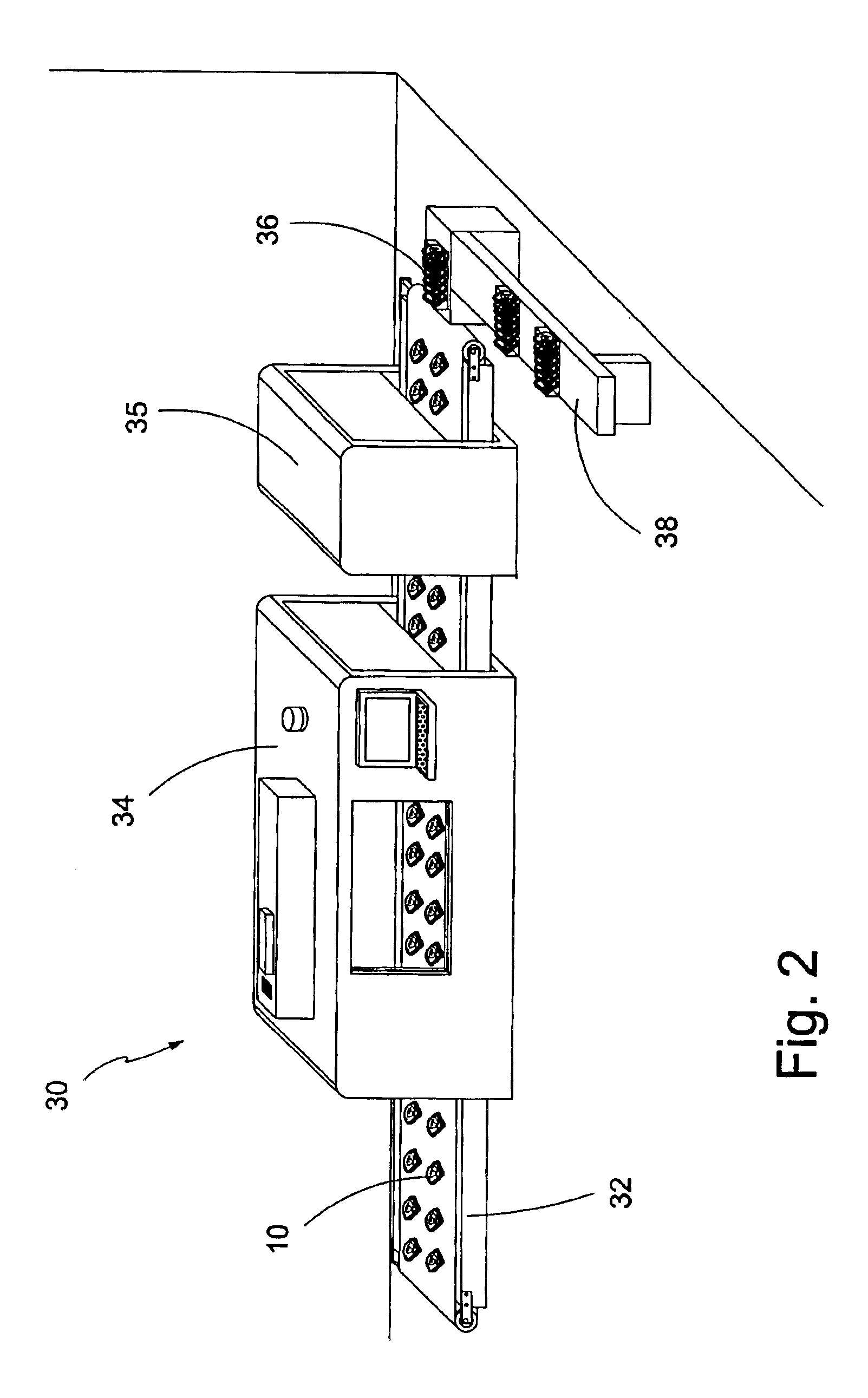Partially thermal treated dough intermediate and method of making
a technology of thermal treatment and dough, which is applied in the field of dough intermediates, can solve the problems of contaminating the surface of the filling or coating, affecting the quality of the finished product, so as to achieve the effect of reducing the cost of production
- Summary
- Abstract
- Description
- Claims
- Application Information
AI Technical Summary
Benefits of technology
Problems solved by technology
Method used
Image
Examples
Embodiment Construction
FIG. 1 illustrates a front plan view of the dough intermediate 10 of the present invention. The intermediate 10 has a first layer 12, with first 14 and second 16 surfaces. The first layer 12 is a dough which is made from mixing flour, water and yeast to achieve a relatively elastic medium which may be rolled, sheeted or otherwise prepared for coating with the second layer 26. The first layer 12 has first and second surfaces 18 and 20, respectively and first and second end edges 22 and 24.
The intermediate 10 is provided with a second layer 26 which is coated on one of the first and second surfaces 14 and 16 and in a manner so as to be near one of the first and second end edges 18 and 20. As shown in FIG. 1, the second layer 26 is coated so that the coating is substantially coterminous with the second end edge 20 of the first layer 12.
As used herein the term “dough intermediate” refers to a dough product, which typically undergoes at least one additional step by an end user before the...
PUM
 Login to View More
Login to View More Abstract
Description
Claims
Application Information
 Login to View More
Login to View More - R&D
- Intellectual Property
- Life Sciences
- Materials
- Tech Scout
- Unparalleled Data Quality
- Higher Quality Content
- 60% Fewer Hallucinations
Browse by: Latest US Patents, China's latest patents, Technical Efficacy Thesaurus, Application Domain, Technology Topic, Popular Technical Reports.
© 2025 PatSnap. All rights reserved.Legal|Privacy policy|Modern Slavery Act Transparency Statement|Sitemap|About US| Contact US: help@patsnap.com



